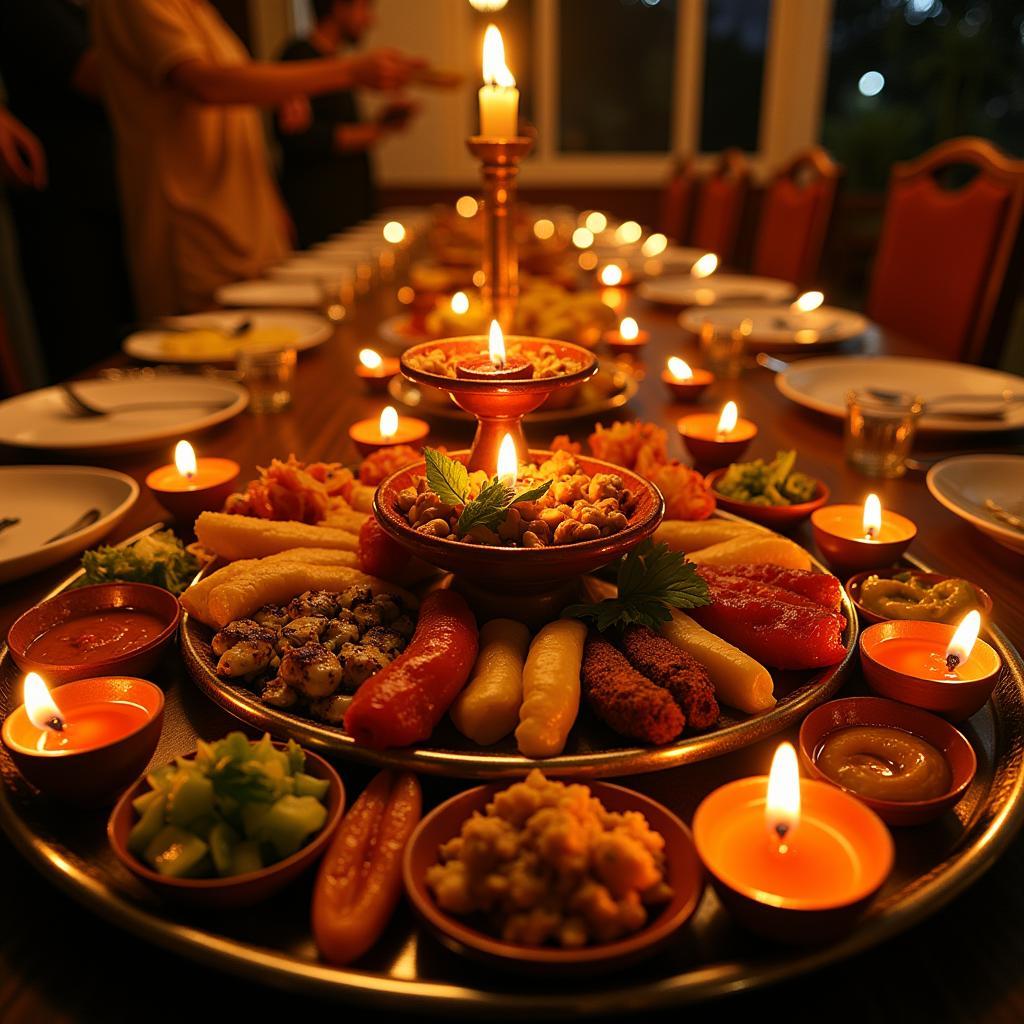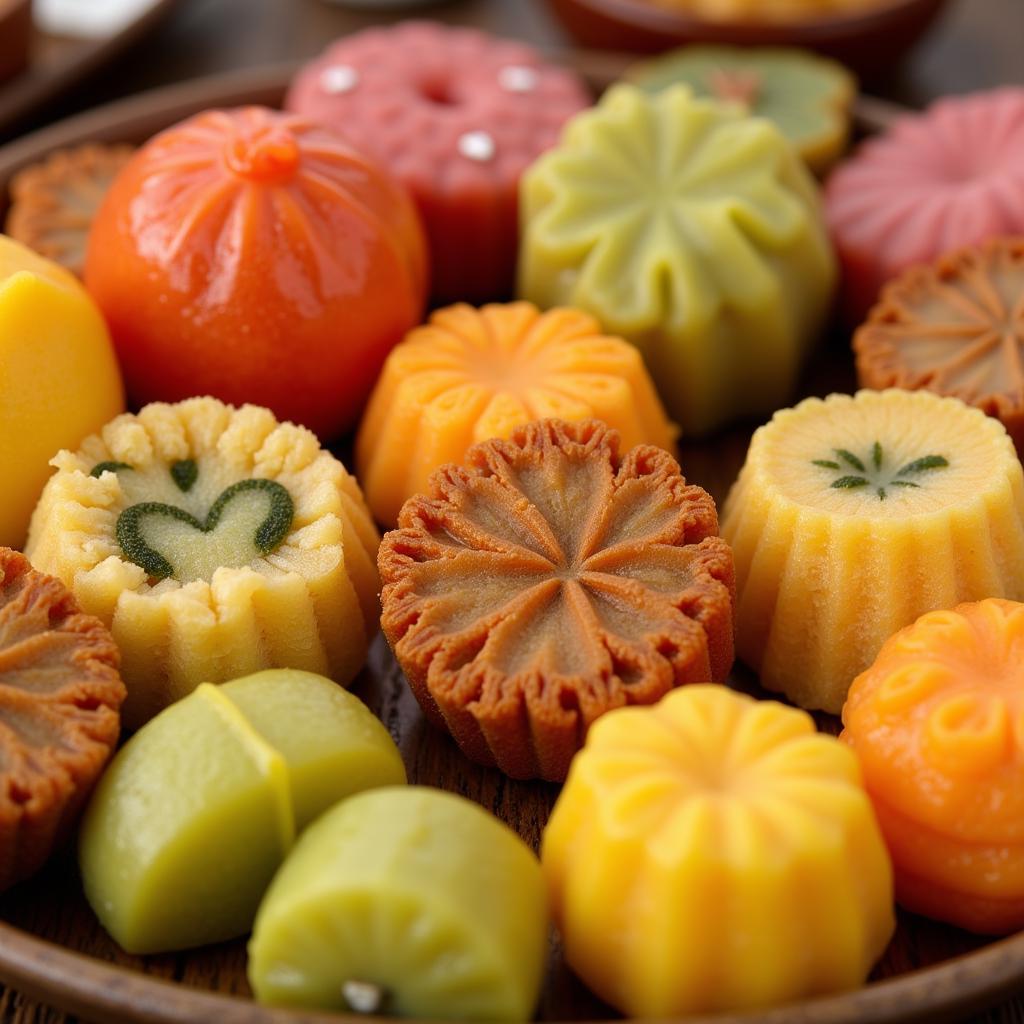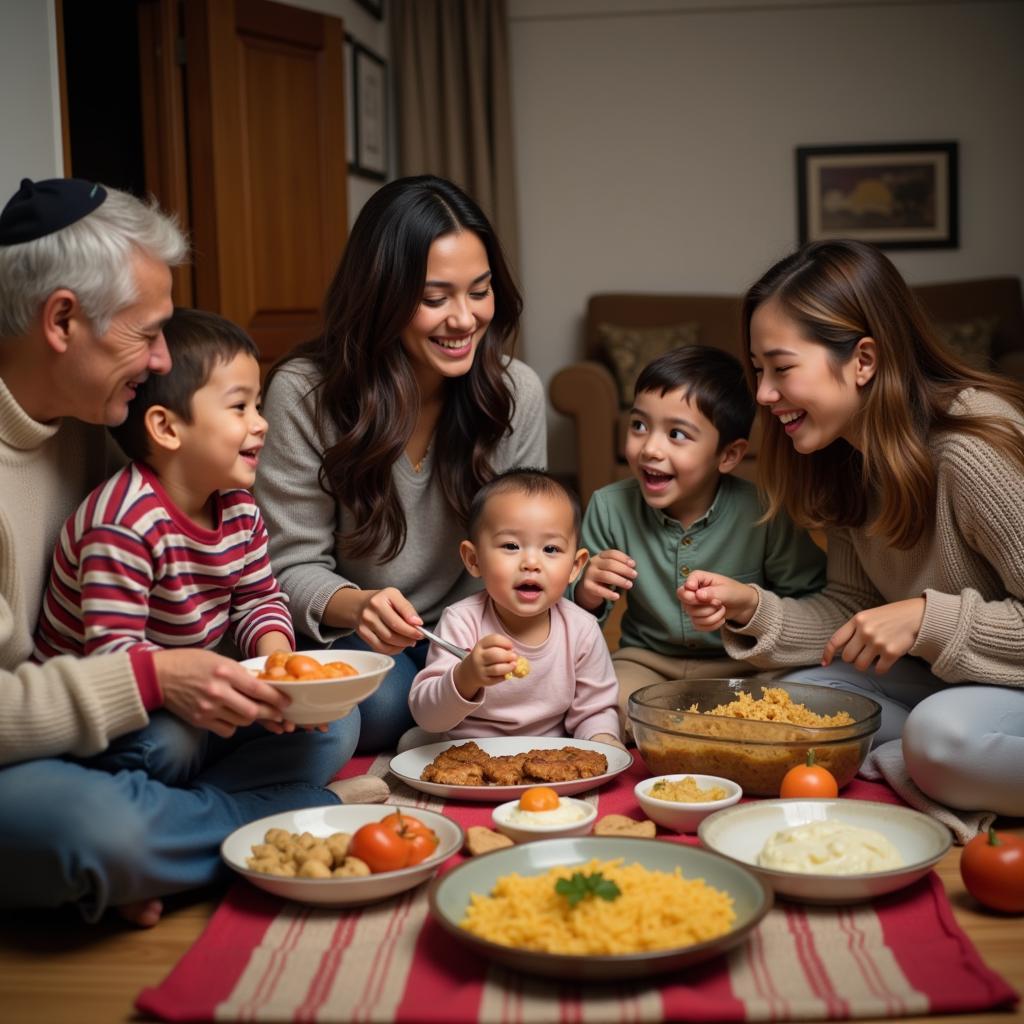Annakut, literally meaning “mountain of food,” is a vibrant and significant Hindu tradition observed during Diwali or other auspicious occasions. It’s a grand feast offered to the deities, showcasing a dazzling array of vegetarian dishes, meticulously prepared as a symbol of gratitude and devotion. But what exactly comprises this elaborate spread? This comprehensive guide delves into the fascinating world of Annakut food items, exploring the cultural significance, regional variations, and some popular recipes.
 A colorful Annakut platter prepared for Diwali celebration
A colorful Annakut platter prepared for Diwali celebration
Decoding the Annakut Tradition
The Annakut ceremony is a beautiful testament to the Hindu belief in honoring divinity through food. The sheer variety of dishes offered signifies abundance, prosperity, and gratitude for the blessings received. It’s a time when families and communities come together, pouring their culinary expertise and love into preparing a feast fit for the gods.
Unraveling the Annakut Food Items List
While the specific dishes can vary based on regional and family traditions, an Annakut platter typically comprises a diverse selection of:
1. Sweet Delights (Mishthan)
- Halwa: A rich, pudding-like dessert made with ingredients like carrots, bottle gourd, or semolina.
- Ladoo: Spherical sweet treats made with gram flour, coconut, or sesame seeds, often flavored with cardamom and nuts.
- Barfi: Fudge-like confections made with condensed milk, sugar, and various nuts and flavors.
- Puran Poli: Sweet flatbreads stuffed with a lentil and jaggery filling.
 A variety of colorful Indian sweets arranged for Annakut
A variety of colorful Indian sweets arranged for Annakut
2. Savory Dishes (Farsan)
- Shaak: Vegetable preparations, often featuring leafy greens, root vegetables, or legumes.
- Kathol: A savory stew made with lentils or beans.
- Puri/Roti: Indian flatbreads served as an accompaniment to the main dishes.
- Rice Preparations: Plain steamed rice or flavored rice dishes like pulao.
3. Snacks and Fritters
- Samosa: Crispy, deep-fried pastries filled with potatoes and peas.
- Dhokla: Steamed savory cakes made with fermented batter, popular in Gujarati cuisine.
- Fafda: Crispy fried snacks made with gram flour, a specialty of Gujarati cuisine.
4. Drinks and Beverages
- Panakam: A refreshing drink made with jaggery, lime, and ginger.
- Thandai: A creamy milk-based drink flavored with nuts and spices.
“The beauty of Annakut lies in its inclusivity,” shares renowned food historian, Dr. Anjali Desai. “It’s a celebration of diverse flavors, textures, and culinary traditions, reflecting the richness of Indian culture.”
 A family enjoying a traditional Annakut meal together
A family enjoying a traditional Annakut meal together
Beyond the Feast: The Significance of Annakut
While the culinary aspect of Annakut is undoubtedly captivating, it’s crucial to recognize the deeper meaning behind this tradition:
- Gratitude and Humility: The act of offering food to the divine is an expression of gratitude for the blessings in our lives and a reminder to cultivate humility.
- Unity and Harmony: Annakut brings families and communities together, fostering a sense of unity and shared celebration.
- Abundance and Prosperity: The vast array of dishes symbolizes abundance and prosperity, reminding us of the bountiful gifts bestowed upon us.
Experience the Joy of Annakut
The Annakut tradition is a feast for the senses and a celebration of faith, culture, and culinary heritage. Whether you’re participating in the festivities or simply curious about this vibrant custom, we hope this guide has provided valuable insights into the wonderful world of Annakut food items.
Need help planning your Annakut feast? Contact us at Phone Number: 02437655121, Email: minacones@gmail.com, or visit us at 3PGH+8R9, ĐT70A, thôn Trung, Bắc Từ Liêm, Hà Nội, Việt Nam. Our dedicated team is available 24/7 to assist you.